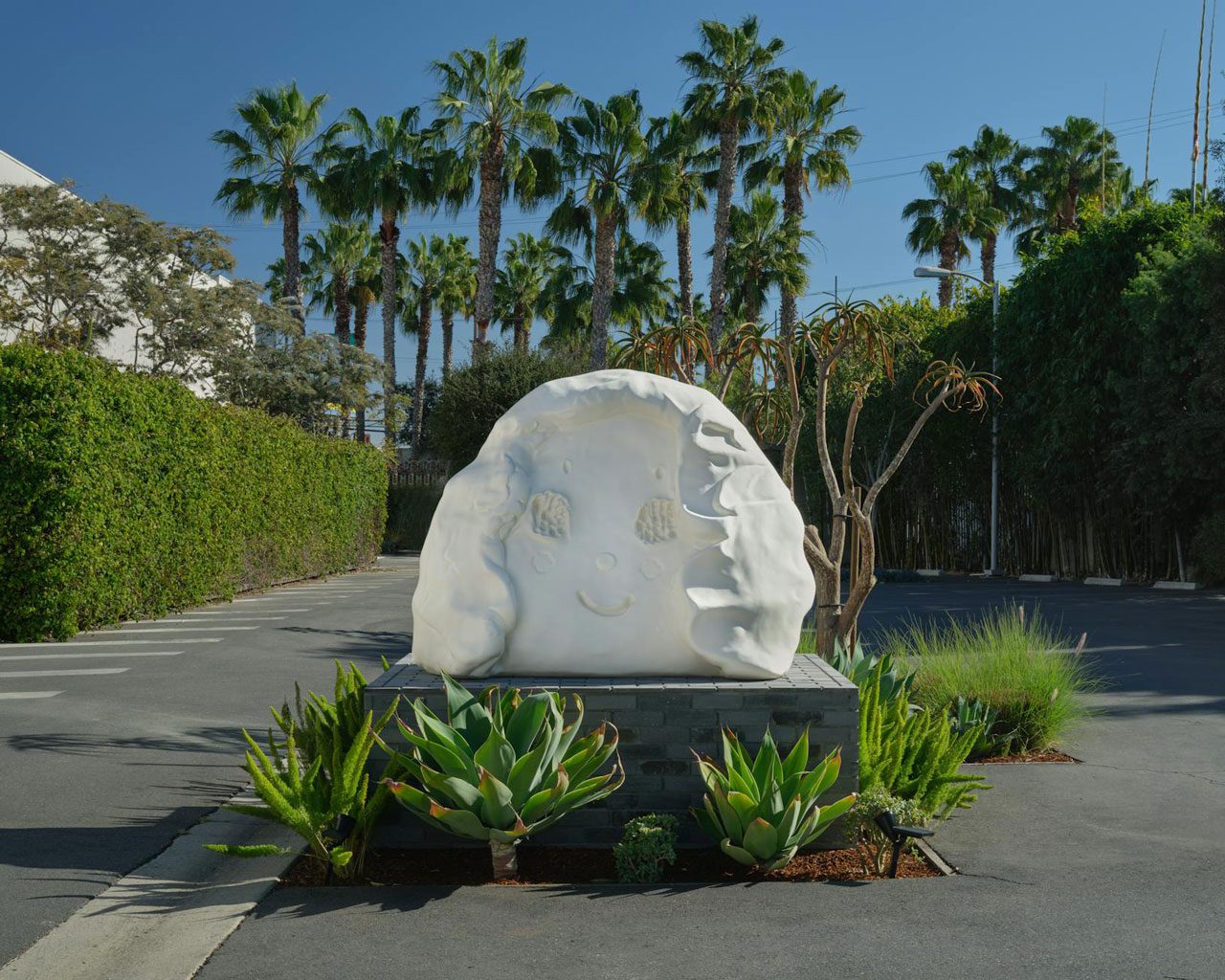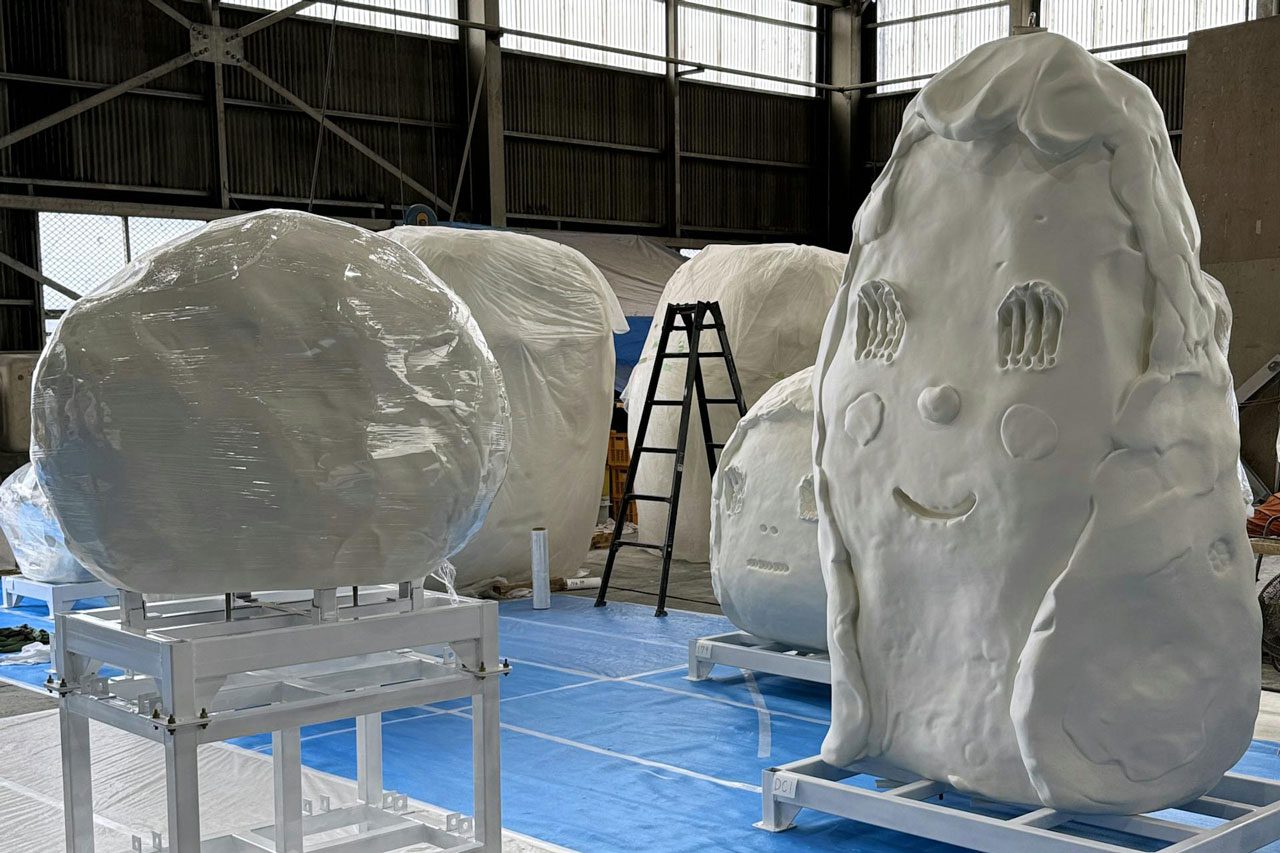ART CITIES: Los Angeles-Yoshitomo Nara
Yoshitomo Nara rose to international prominence in the 1990s for his exquisitely rendered, instantly recognizable portraits of alternately sweet and vicious big-headed figures and melancholic figurative sculptures. Nara’s work in all mediums is the result of his innovative distillation of an enormous array of references and inspirations. These include memories of growing up in rural Northern Japan amidst the lingering presence of World War II; political events of the 1960s and 1970s; the sound and graphics of pop, rock, and folk music; literature; art from Japan’s Edo and modern period; as well as the new expressionism he encountered while studying and living in Germany in the late 1980s and 1990s.
By Dimitris Lempesis
Photo: Blum Gallery Archive
Thirty years ago, Yoshitomo Nara debuted his exhibition “Pacific Babies” at Blum & Poe Gallery. Among the standout pieces was “There is No Place Like Home” (1995), a work that uses dark humor to delve into the complexities of belonging as a young Japanese artist navigating life in Germany on the verge of international recognition. Over time, Nara’s restless uncertainty evolved into a profound sense of connectedness, including a resonance with remote places reminiscent of his childhood in Northern Japan. It was in Sapporo, Hokkaido, that Nara began repurposing leftover clay to reshape his iconic child imagery into irregular, hand-marked forms, rekindling his bond with the material and his sense of place. This process culminated in a new series of bronze sculptures, eleven of which are being unveiled in this latest exhibition. Together, these works illustrate how Nara has transformed the kawaii aesthetic into a captivating realm of unconventional misfits. The exhibition “My Imperfect Self “ showcases Yoshitomo Nara’s evolving sculptural practice, featuring eleven mid-sized heads that exude an eccentric charm and dark allure characteristic of his art. These newly unveiled sculptures represent the culmination of Nara’s experimentation with clay, weaving together ideas and techniques he has refined since 2011, while also marking a poignant return to his artistic origins. Complementing these sculptures are paintings and drawings that echo their themes, inviting viewers to explore Nara’s continual creative evolution, which began with his iconic work “The Girl with the Knife in Her Hand” (1991). The collection of sculptural heads is rife with contradictions, embracing the peculiar and the unconventional. Originally crafted as small, palm-sized clay pieces, they were later enlarged and cast in bronze. Despite their transformation, the pliable essence of the original clay remains palpable, encouraging viewers to trace Nara’s touch across their soft, pillowy surfaces. Many of the heads feature flattened faces, marked by lines, holes, and indentations etched into their matte white surfaces, framed by marshmallow-like hair. These marks, rather than aggressive gestures, evoke a sense of embedded scars—playful, raw, and imbued with an odd yet carefree quality. While the heads resemble children, they depart from the familiar Nara-child archetype. For example, “Title to be Confirmed” features a shy smile and gouged eyes, retreating into folds of imperfect hair, while “Long Tall Peace Sister”, the largest piece in the series, incorporates floral motifs crafted from traditional tile molds. Her delightfully smiling face is juxtaposed with skeletal lines forming her eyes, highlighting the charmingly offbeat character of these works. The awkwardness of the sculptures embraces the potential of imperfection and chance, forming a cohesive group of misfits. For Nara, this reflects a renewed engagement with the act of creation—a dynamic interplay between body and material, craft and object—fueling his curiosity about incompleteness and impermanence. This shift in Nara’s approach draws inspiration from three key sources. The first stems from his response to the 2011 Great East Japan Earthquake and Tsunami, a deeply personal event that profoundly impacted the artist, whose childhood home was near the disaster site. Struggling to paint after the tragedy, Nara turned to clay, using his entire body to wrestle with the material like a sumo wrestler. This physical engagement freed his creative energy and reignited his interest in sculpture. The imprints left by his hands and body became permanent traces when cast in bronze, embodying a stark contrast to the transient nature of life underscored by the catastrophe. The second influence emerged around 2016, during Nara’s time in Northern Japan, including the remote Ainu-rooted village of Tobiu in Sapporo. Here, he began crafting small, playful clay heads, allowing himself to work intuitively with the material. These spontaneous creations reflect a gentler, more exploratory approach, inspired by the tranquil landscapes and remote settings of the region. Scaling up these sculptures offered Nara the opportunity to pare down figurative elements, giving rise to unconventional, existentially quirky forms. The third, more indirect source of inspiration involves revisiting Nara’s early works, including lesser-known paintings and drawings featuring elongated or misshapen figures. By reexamining and reinterpreting these older, imperfect works, Nara uncovers latent potential, using them as a springboard for new directions. A sense of connectivity runs through Nara’s oeuvre, linking his paintings, drawings, and sculptures into a continuum that oscillates between the meditative and the spontaneous.
Photo: Yoshitomo Nara’s studio, Courtesy the artist and Blum Gallery
Info: Curator: Yeewan Koon, Blum Gallery, 2727 South La Cienega Boulevard, Los Angeles, CA, USA, Duration: 18/1-22/3/2025, Days & Hours: Tue-Sat 10:00-18:00, https://blum-gallery.com/








